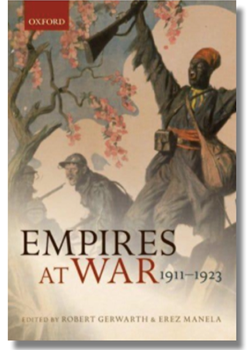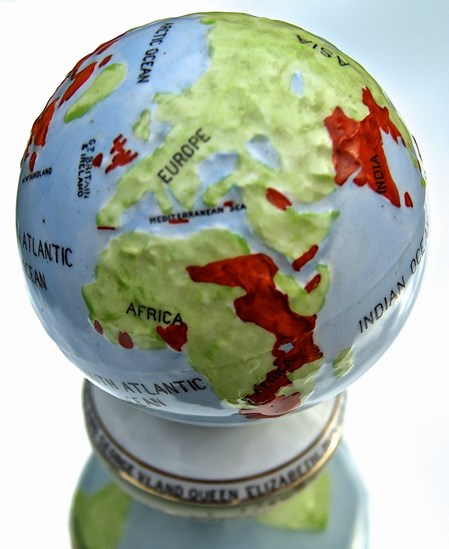Empires at War 1911 - 1923 Edited by Prof. Robert Gerwarth & Erez Manela
- Home
- World War I Book Reviews
- Empires at War 1911 - 1923 Edited by Prof. Robert Gerwarth & Erez Manela

OU Press 17 August 2015
pp.243
ISBN 9780198734932
When I sit down to read about the First World War, I usually grab a map of the Western Front. With Empires at War, you need a globe. This is the best way to picture a world war.

Empires at War 1911 - 1923 declares its scope,‘the organised mass violence of war had not ended; it had only shifted its modes and focal points’. (p.5). On page 2, the authors say that ‘it pays to examine the war within a frame that is both longer … and wider than is typical’ which is why they chose 1911 to 1923 though there’s plenty of appropriate reference to the decades before this period and the century that followed.
On page 3, the editors say that the First World War was 'not a war between European nation states, but a war of multi-ethnic global empires.'
The editors keep defending their choice ‘if we take the conflict seriously as a world war we must … adopt a perspective that does justice to the millions of imperial subjects called upon to defend their imperial governments interest.’ (p.3) Indeed we should.
And they say, ‘the impact of the war was profoundly felt by hundreds of millions living across the imperial world … conscription, occupation, inflation, economic dislocation while kindling new opportunities, ideas, plans and hopes’ (p.4) In this collection of papers, the different writers talk about how the war affected people all over the world and how it cast a long shadow over the 20th century.
Since we are looking back from 2021, the later parts on China and Japan would be a good place to start to understand how the empires at war in Europe affected Asia.
Empires at War 1911-1923 wants us to understand the "notion of white racial superiority" that was so important in the negotiations leading up to the peace deals of 1919. It also covers a longer time period and a larger geographical area.
In 1914, the leaders of subjugated countries and dominions thought that supporting enlistment was a political move to get more freedom or independence. They thought that by showing willingness and getting more political power, they could 'throw off the colonial yoke.' They were right, but it would take another world war, a new age, and many more years to happen. Empires at War 1911-1923 wants us to believe that the First World War was a disruptive force that broke up empires, created new countries, set false limits, and woke up sleeping giants, including the United States, Japan, and China.
Reviewed by Jonathan Vernon (August 2021)





